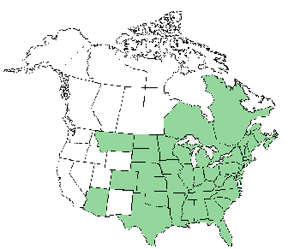Poison Ivy
General:
Poison ivy is a common North American plant that produces urushiol, a clear liquid compound found within the sap of the plant that causes an itching rash in most people who touch it. The fluids released by scratching the blisters do not spread the poison or the rash. The fluid in the blisters is produced by the body and it is not by urushiol.
Poison ivy likes to grow in suburban areas and many people I know have unwittingly cleaned out “weeds” along neighboring fences only to wake up the next day with the signature itchy rash.
Description:
Poison ivy can be found growing in any of the following three forms
Trailing vine that is 4 to 10 inches high
A climbing vine that grows on trees or some other support. Older vines on substantial supports send out lateral branches that may at first be mistaken for tree limbs.
Poison ivy leaves are deciduous and typical form in clusters 3 on their own stem that are almond-shaped. The leaves grow alternately on the main stem. The leaves are not very large – approximately 1 ½” – 5” long. Like other plants that are deciduous, the leaves of poison ivy change color with age and season starting out often times red in spring then to green then red, orange, or yellow in the fall. The stems are smooth – this easily distinguishes poison ivy from blackberry vines. The leaves as shown by the picture can have slight serrated edges and as the leaf matures can be shiny.
Vines growing on the trunk of a tree become firmly attached through numerous aerial rootlets. One problem here is that poison ivy grows in the same areas as Virginia creeper, so care must be exercised because you will not be able to clearly identify poison ivy in this situation. Poison ivy vines can have a “hairy” appearance, which can help in identification.
Poison ivy flowers from May to July. The flowers are yellowish- or greenish-white located in clusters approximately 3” above the leaves. The berries mature by August to November and are grayish-white in color.
Location:
Poison ivy grows throughout much of North America, including eastern Canada in Quebec, Ontario, Manitoba, and all U.S. states east of the Rockies, as well as in areas of Mexico. So the lesson here is that you can expect it just about anywhere. When out and about hiking or camping you will likely find poison ivy in wooded areas, much of the time in open areas that receive sun. It also grows in exposed rocky areas and in open fields.
Poison:
Urushiol binds to the skin on contact, where it causes severe itching that often develops into a red rash or flesh colored bumps and blistering. The rash can be treated with Calamine lotion or other over the counter remedies such as oatmeal baths and baking soda. In severe cases hospitalization may be required or if the plant has been ingested.
Urushiol oil can remain active for several years, so handling dead leaves or vines can cause a reaction. In addition, oil transferred from the plant to other objects (such as pet fur) can cause the rash if it comes into contact with the skin.
